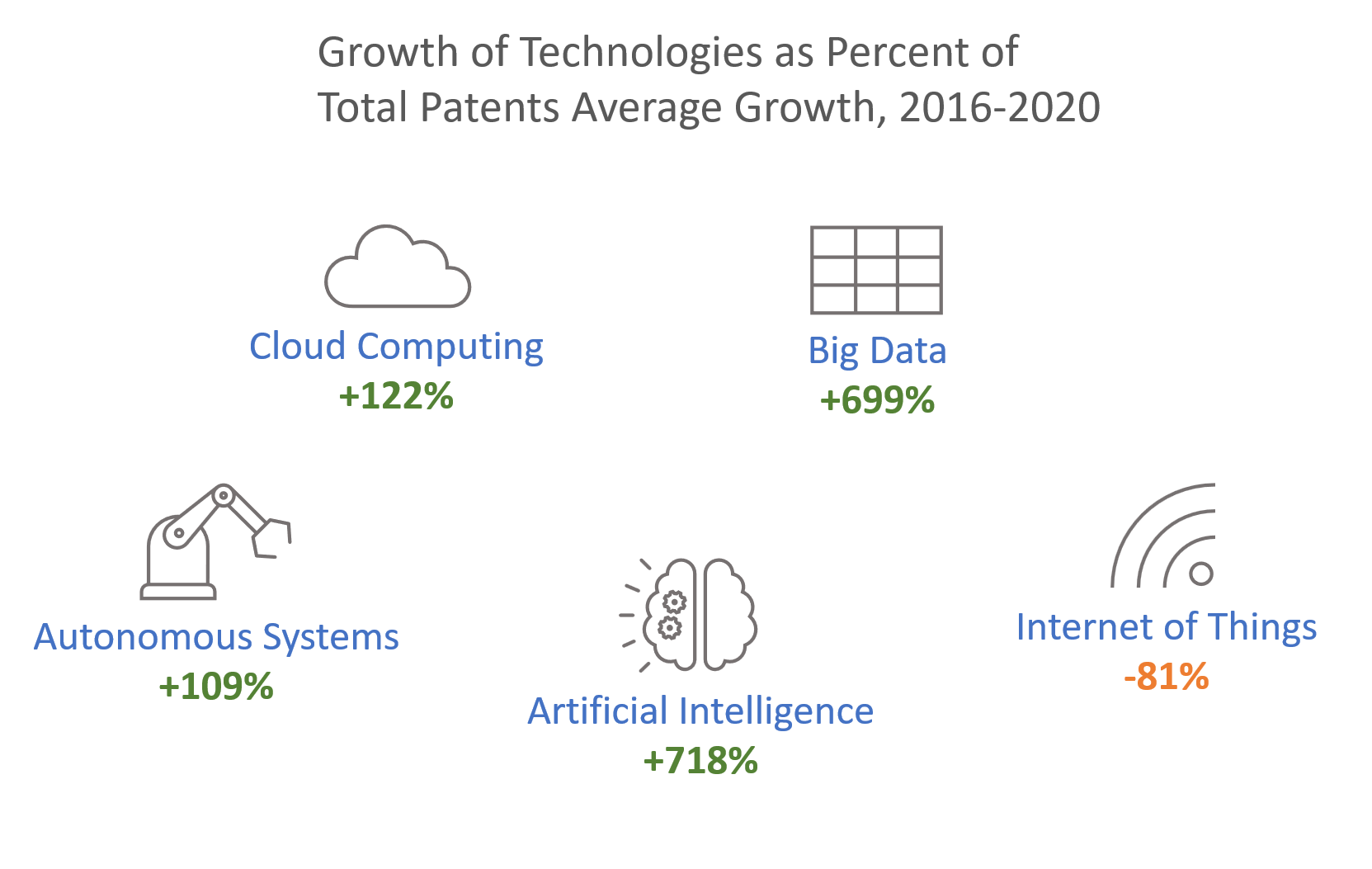GenerativeIQ®’s AI IP Strategy
In this blog post, we briefly explain our AI IP Strategy. We assess the various IP rights (trade secrets, © and patents) that may are applicable to AI Innovations and conclude that patents provide the most value and formidable legal monopolies. However, a thorough AI IP Strategy needs to take into account all of the IP rights, their applicability, and their benefits and limitations.
Trade Secret Rights & Copyrights Provide Limited Protection
Trade secrets will provide limited protection for AI technologies. For example, trade secrets can exist at the AI model level. For AI models that are trained and/or fine-tuned with unique data, this data may be kept confidential in the cloud as trade secrets. So long as the data cannot be independently discovered or easily accessed in the public domain, trade secret protection will exist. However, if a third-party competitor can reverse engineer the data or independently create the data, or some or all the data eventually becomes publicly available, the trade secrets will disappear. For this reason, trade secret protection for AI technology can be limited and fragile.
Copyrights may also be useful to protect training data. Copyrights protect the expression of the data, like the text and graphics of this post. But Copyrights on data may only provide narrow protection. Cases are presently being litigated over whether using images/text taken from the internet is a fair use (and thus not infringing) when they are used to train a model and used to generate new images or text. The scope of the fair use doctrine is being hotly debated in congress and in the courts. Until these issues concerning copyrights and the scope of the fair use doctrine are resolved, the scope of copyright protection for data used in a model for generative AI purposes will remain in flux.
Patents are Legal Monopolies
To infringe on the copyrights or misappropriate trade secrets, the party accused must have had improper access to the data. If this requirement is not met, copyright infringement or trade secret misappropriation cannot be proven. Unlike copyright infringement or trade secret misappropriation, there is no access requirement for proving patent infringement. Patent infringement can occur even if the accused third party independently developed the patented technology. For this reason, patents are considered legal monopolies, and provide the most effective offensive protection for the AI stack.
The AI Patent Tsunami Has Already Begun
A patent is a legal monopoly in the country where it is promulgated. The race to own these legal moats, throughout the world, has already begun. The WIPO 2022 report concludes that AI patents grew faster than any category of patents, including all other frontier technologies, between the years 2016 and 2020 [1]. The current trend for getting patents in the AI space is only accelerating patent filings worldwide.

AI IP Strategy
To get a patent, an application with a detailed specification disclosure of the AI innovation is necessary, compromising any trades secrets that may be disclosed in the published specification. A carefully planned IP strategy should be considered to determine the right mix and costs for obtaining IP rights, weighing the return on investment (ROI) for each IP right pursued. For example, patents may not be viable for protecting just data, making trade secrets and copyrights the only IP rights applicable. However, these rights cannot be used offensively to block entry to the AI market, unless it can be shown that access to the copyright or trade secret occurred. By contrast, patents can provide blocking barriers to entry to portions of the AI market covered by the patent without having to prove access occurred. So, if patents are eligible, as discussed in our next blog posts, they provide the most durable moats for the AI stack and likely define the future owners of the generative AI platform.
GIQ®’s Philosophy
A company’s IP strategy should be crafted with milestones over a period of time (e.g. a 5-year horizon or longer) with the similar goal and intention as a product road map. A product road map shows how the products offered will develop and meet expected needs in the market. The IP strategy should similarly anticipate the technological advancements and IP protections necessary to protect these products. Companies often miss the IP strategy entirely because they lack the expertise, feel it’s too expensive, or are too distracted getting their products to market. This is a missed opportunity to strategically limit future competition and sustain profit margins. Each stage of the IP strategy should consider if the IP strategy is helping to maximize the company goals of protection and whether it is cost effective. This is GenerativeIQ®’s role with every investment we make. We add value to our investments by helping you maximize your IP strategy. Our interests are aligned with the company’s, getting the greatest ROI of protection for every IP right sought.
[1] World Intellectual Property Organization (WIPO) Report 2022, The Direction of Innovation pg. 60. Director’s Blog: Kathi Vidal, Under Secretary of Commerce for IP and Director of the USPTO (Sept. 29 2023)(AI now appears in more 18% of all utility patent applications filed…in 50% of all technologies examined by the PTO).


